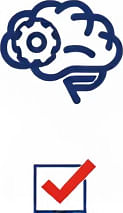Digital Detox Strategies for Managing ADHD
 by Verner Mayer
by Verner Mayer
Discover how stepping away from screens can help adults and young adults with ADHD improve focus and productivity. Learn simple techniques to incorporate digital breaks into daily routines for better mental clarity and energy.

Many people with ADHD find that constant screen time adds to daily challenges. Taking regular breaks from devices can make a big difference. For instance, digital detox involves setting aside time without phones or computers to refresh the mind.
This approach works well for those dealing with ADHD because it reduces overstimulation. Too much online activity can lead to scattered thoughts and fatigue. By creating space away from notifications, individuals often notice improved concentration.
One effective method is to start small. Begin with short periods, like 30 minutes a day, free from all digital devices. During this time, engage in activities that bring joy, such as reading a book or going for a walk. These moments help build a routine that supports overall well-being.
In practice, many find that ADHD symptoms ease after consistent breaks. For example, someone might feel less overwhelmed by tasks after a digital pause. This technique allows the brain to reset and regain focus.
To make it easier, try using timers to signal when to step away from screens. Keep a journal to track how these breaks affect daily life. Over time, patterns may emerge that show real improvements in productivity.
Benefits of Digital Detox for ADHD
Regular digital detox offers several advantages. First, it can lower stress levels, which is common for those with ADHD. Without the constant pull of emails and social media, it's possible to think more clearly and complete tasks with less effort.
Another benefit is better sleep. Screens before bed often disrupt rest, leading to tiredness the next day. By avoiding devices in the evening, people report feeling more rested and ready for challenges ahead.
Tips for Getting Started
- Choose specific times for detox, such as during meals or before sleep.
- Involve friends or family to make it a shared effort.
- Replace screen time with hobbies like drawing or exercise.
These strategies can lead to lasting change. Remember, everyone with ADHD has unique needs, so adjust as needed. The key is to be kind to yourself and celebrate small wins.
Building these habits takes time, but the results are worth it. With patience, productivity can improve, making everyday life more manageable and enjoyable.
